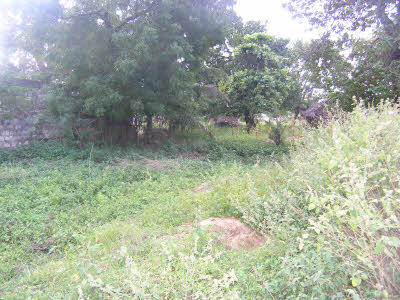| Visit to
Kibaoni primary school Kilifi, Kenya, 1 August 2007
Ruud Kampf Frederick Tettey-Lowor
|
Local contacts:
Leakey Ochieng: 07-24714860 (assistent
fieldmanager)
Robert Onchangwa: 07-28077490 (fieldmanager)
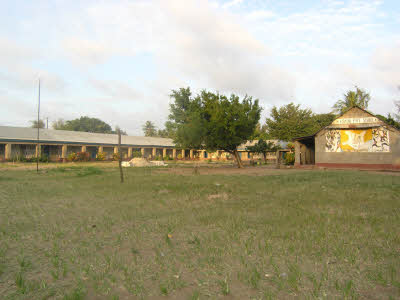
Goal of the visit:
to asses the damage that has been done to a toilet building at the school as asked for by Stichting Furaha
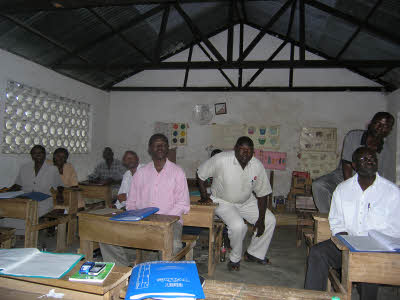
The damaged toilet building
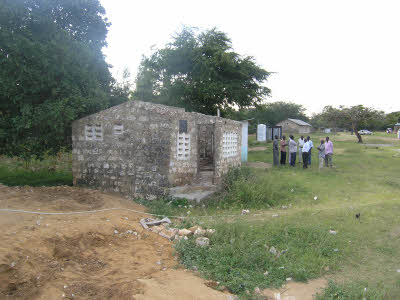
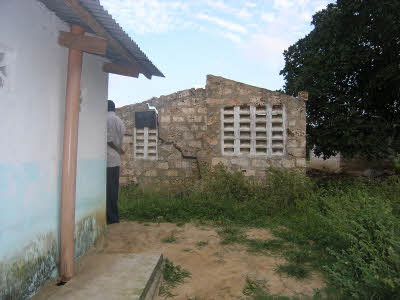
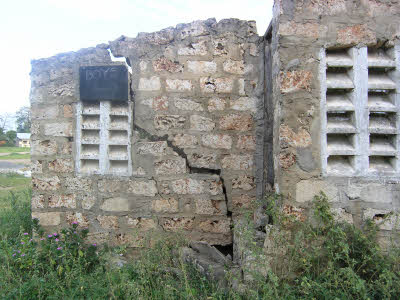
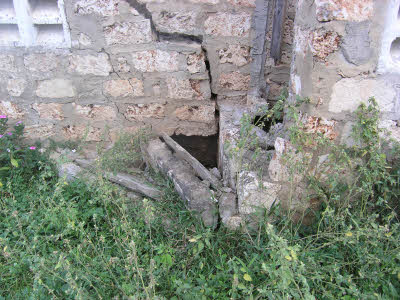
- the new toilet building has been constructed less the a year ago and became total loss during heavy rains
Why?:
Firstly it puzzled us, but Frederick came with the suggestion: the foundation is collapsed because of too high ground water pressure. Building took place in dry season. Due to the very fine sandy soil the soil became water logged until the surface, coursing to the construction to collapse.
A good ground water discharge would have prevented this problem: a drainage around the building!
Who's fault?:
Of course the designer/builder, etc. But to our opinion it is a learning point. You can only make mistakes like this when you do something. Now people know and will not make the same mistake soon!1
Verdict:
The collapse has been caused by a combination of natural forces and human mistakes, but these things can happen. No reason to stop help, these people really need support: 1200 plus orphans!
Remarks/questions:
- the only material that could be reused is a part of the stones;
- it is needed to get an impression of the quality of the soils and the level of the ground water table. Did the collapse happen because the sands are saturated fine sands, which can be considered as 'flowing sands' or is it just the pressure of the ground water during the rainy season, whilst the ground water table is very low during the dry season? This could even mean that the soak pit will fill with ground water in the rainy season.
Construction of a new toilet building
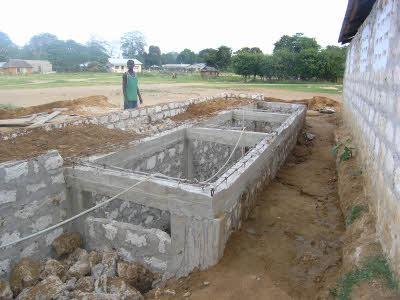
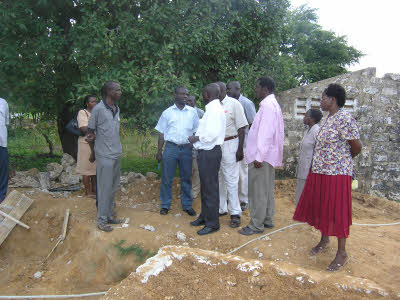
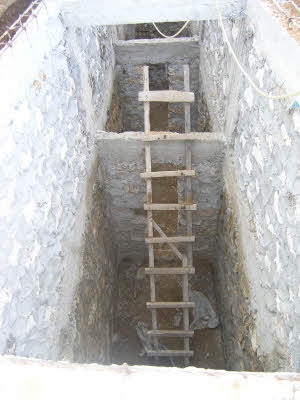

First question to ask, is it really handy to build such deep cellars when the soil is that unstable? We advised really to take care of a very, very good drainage around the building.
The big cellar was very roughly plastered at the inside because of lack of money: will become very dirty
The underside was not watertight: it is not a septic tank but a soak pit, causing ground water pollution. Some more pictures below.
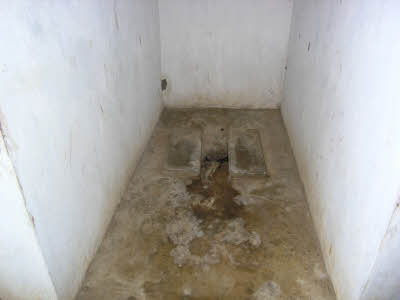
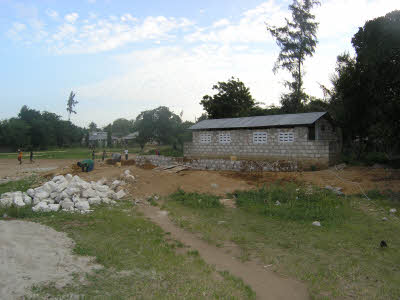
Some of the temporary toilets:
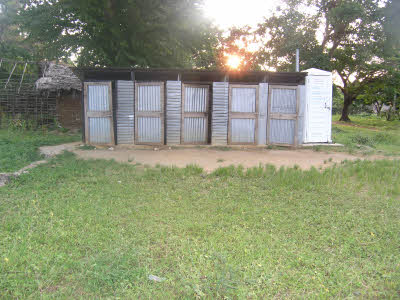
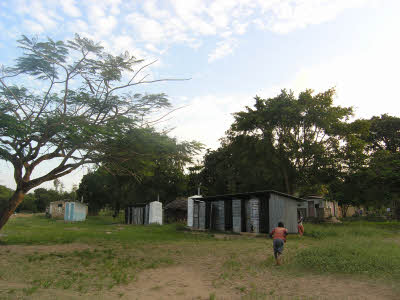
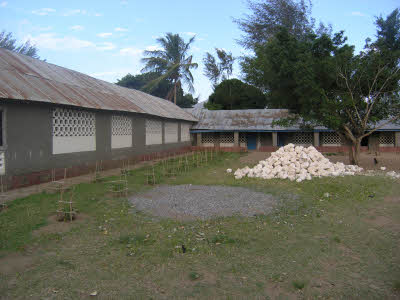
The need of the school for toilet facilities is very high, it is prime on the agenda. We suggested to build urinals for boys, while they are much cheaper and can be used for a demonstration of urine reuse (use the south African experiences).
We observed that no possibilities to wash hands are available, it is strongly advised to install simple "hand washing devices". To minimize use of drink water these could also be overhead tanks, with a simple tap. Because of health safety a maintenance schedule, including a schedule for cleaning could be imposed.
For new systems the following recommendations seem to be appropriate:
a. use circulair pits, which provide a much higher strength to the walls
b. do not build the sanitation blocks on top of the pits, but alongside
c. the deep pits also could be converted in small digesters, producing gas for safety lighting at night
A good solution could also be to build "Ecosan" toilets here, aimed on reuse of feces, urine and water.
Combined with small constructed wetlands and rainwater harvesting.
Conclusion:
A more holistic approach is advised, not only looking at the problems of drinking water and toilets, but how can we integrate this in the practice of the whole schoo?.
An example for this could be the sanitation project in the Shimo la Tewa prison, Mombasa: link
